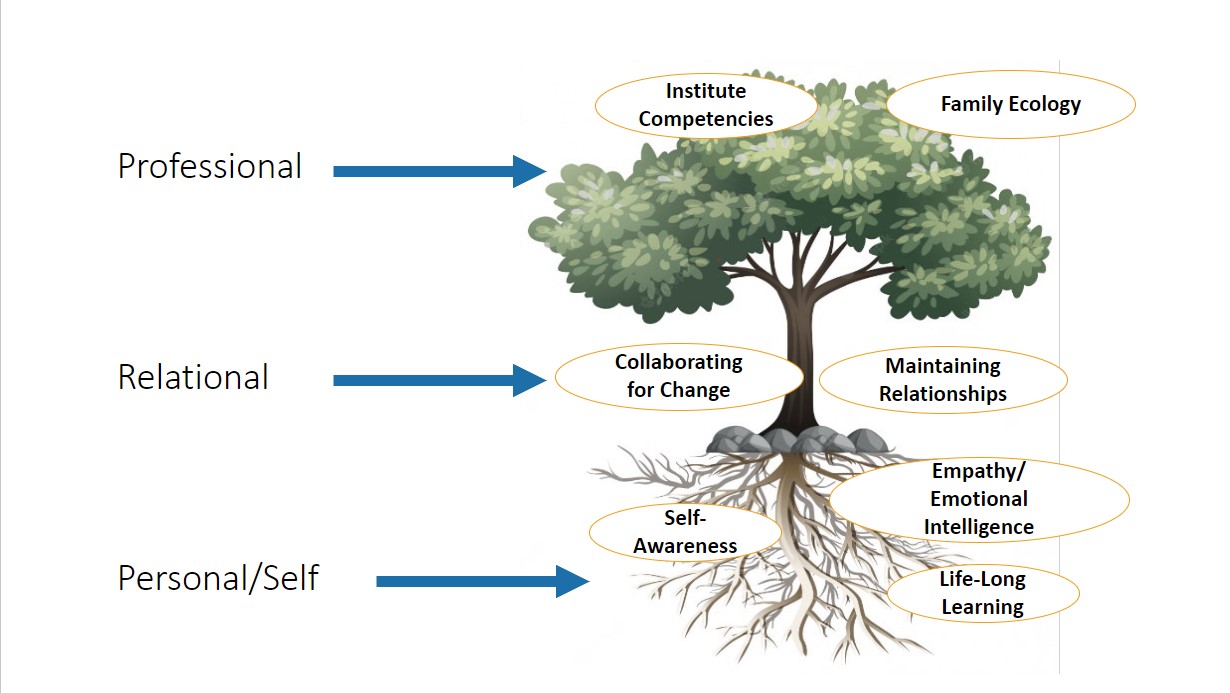Relational Readiness: What is it? Why does it matter? How do you measure it?
“Ready” means someone is prepared and willing. Relational readiness means that someone is ready for relationships. This term describes a set of personal characteristics that enable the development of healthy, supportive relationships. Put another way, a person who is “relationally ready” is prepared and willing to develop relationships with other people.
Why does Relational Readiness matter?
Humans are social beings! It is important that all of us have skills to develop and nurture positive, supportive relationships with others.
Relational readiness is especially important in certain professions, like social work, psychology, and healthcare. These professions require that a practitioner be able to build a therapeutic relationship to support another’s growth.
C3Be recently worked on a project measuring Relational Readiness in prospective Family Support Professionals, also known as home visitors. The goal of this project was to expand pathways into the career by identifying relational readiness skills in prospective home visitors. Home visitors are trained professionals who help support expectant parents and parents of young children. They provide or connect families to resources and support related to parent and child health and well-being, child development, parent-child relationships, family relationships, and many other factors that improve the well-being of families. Relational readiness is a crucial skill for home visitors, whose work requires developing supportive relationships with parents and children.
What is Relational Readiness?
C3Be uses a backwards design approach to developing assessments, inspired by Evidence-Centered Design (Mislevy, Almond, & Lukas, 2003). In this process, we begin with the outcome or end state. In this case, we considered the characteristics of Relationally Ready people.
-
What does it look like when someone is “relationally ready”?
-
How do they behave? What do they say?
-
How is this different from someone who is not yet “relationally ready”?
We went straight to the experts to help us answer these questions. We interviewed experienced home visitors and parents who used home visiting services in the past. We consistently heard that good home visitors are good listeners, they are open-minded and nonjudgmental, they are flexible, and they persist through conflicts. They genuinely care for their clients’ well-being and see them as whole people with strengths and challenges. Home visitors may struggle with setting boundaries to protect their own well-being, even though such boundaries may help them prevent burnout.
We also reviewed academic research on characteristics of home visitors. We came across terms like “empathy,” “self-awareness,” “lifelong learning,” and “strengths-based.” We combined what we learned from our own research with what we found in the academic literature, and distilled it into a Relational Readiness framework.

How do you measure Relational Readiness?
To measure Relational Readiness, we broke it down into the underlying attributes: Empathy, Sense of Self, Emotional Intelligence, Lifelong Learning, Maintaining Relationships, and Collaboration.
C3Be used a combination of self-report items and performance tasks to measure relational readiness. The decision to use a self-report or a performance task depends on the nature of the attribute being measured, and the existence of constraints that may limit objective observations.
Self-report items present the respondent with a series of statements and ask them to indicate how well each statement describes them, usually on a Likert scale. Self-report items are imperfect, because they rely on a person’s subjective judgment of themselves. They are best used when measuring beliefs, feelings, attitudes, and other internal traits that are difficult to observe objectively. For example, here are some self-report items measuring Sense of Self.
-
I feel uncomfortable discussing my challenges and weaknesses.
-
Sometimes it is difficult for me to understand why I feel the way that I do.
-
It is important for me to understand how other people perceive me.
Performance tasks are more useful for skills and abilities that can be observed objectively. For example, the following items measure Emotional Intelligence.
-
What emotions are represented on the faces below?


-
During a disagreement, a friend begins to scream in anger. To resolve the situation, which action would be most effective? Which action would be least effective?
A. Stop the conversation and walk away.
B. Suggest a break.
C. Ask why they are so angry.
D. Suggest an anger management program.
These items ask someone to perform two authentic tasks: interpret nonverbal communications, and decide how to respond in an emotionally stressful situation. They are authentic tasks because they provide direct evidence of performing the skill in a realistic situation.
These assessments will help people diagnose their own Relational Readiness. We hope that they will encourage further reflection and learning for people interested in careers in home visiting or related fields.
References
Mislevy, R. J., Almond, R. G., & Lukas, J. F. (2003). A brief introduction to evidence‐centered design. ETS Research Report Series, 2003(1), i-29.